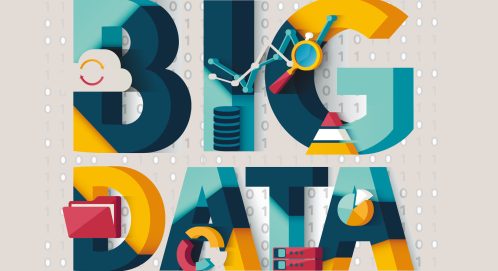The retail landscape is not just competitive, it’s fiercely cut-throat. What may have been considered redundant or impossible yesterday, can be groundbreaking today. What may seem to drive innovation today, can be damaging or obsolete tomorrow.
Data means everything for a demanding industry like retail, and Data Analytics has emerged as a game-changing tool for global retailers. By harnessing the power of data-driven insights, businesses can make informed decisions that not only boost sales and improve customer experiences but also drive overall business growth.
In this article, we’ll delve into the transformative impact of data analytics on retail operations and strategy, exploring how it's reshaping the industry and creating new opportunities for success.
How Data Analytics is Applied to Typical E-Commerce Ops Market in Retail
The retail sector is experiencing a data revolution. According to a report by Fortune Business Insights, the global retail analytics market size is expected to grow up to $18.33 billion by 2028, at a CAGR of 17.7% during the forecast period. This staggering growth underscores the increasing recognition of data analytics as a critical component of retail strategy.
Next, we’ll explore specific areas in greater detail to illustrate how data analytics is shaping the future of retail.
1. Personalized Product Recommendations
One of the most visible and impactful retail data analytics applications is personalized product recommendations. By leveraging customer data, retailers can offer tailored product suggestions that increase average order value and enhance customer loyalty.
How it works: Retailers collect and analyze various data points about their customers, including:
- Purchase history
- Browsing behavior
- Demographic information
- Search queries
- Wishlist items
This data is then processed using advanced algorithms and machine learning models to predict which products a customer is most likely to be interested in.
Impact on Growth:
- Increased Sales: According to a study by Barilliance, personalized product recommendations can drive up to 31% of e-commerce site revenues.
- Improved Customer Loyalty: By consistently providing relevant recommendations, retailers can increase customer satisfaction and encourage repeat purchases.
- Higher Conversion Rates: McKinsey reports that personalization can lift sales by 10% to 30%.
Case Study: Amazon
Amazon's recommendation engine is often cited as the industry standard. The company attributes 35% of its revenue to its recommendation system. Amazon uses a combination of collaborative filtering, content-based filtering, and deep learning models to provide highly accurate and relevant product suggestions to its customers.
2. Optimized Pricing and Promotions
Data analytics enables retailers to move beyond static pricing strategies and implement dynamic, data-driven approaches that respond to market conditions in real-time.
How it works: Retailers analyze various data points to inform their pricing and promotional strategies:
- Historical sales data
- Competitor pricing
- Market demand
- Customer segments
- Inventory levels
- Seasonal trends
Advanced analytics tools can process this data to suggest optimal pricing strategies and promotional offers.
Impact on Growth:
- Increased Profit Margins: McKinsey found that companies using big data and analytics to inform decisions 23 times more likely to acquire new customers, 6 times more likely to retain customers, and 19 times more likely to be profitable.
- Improved Competitiveness: Dynamic pricing allows retailers to stay competitive without unnecessarily sacrificing margins.
- Enhanced Customer Perception: Well-timed promotions can improve customer perception of value and drive loyalty.
Case Study: Walmart
Walmart uses a sophisticated data analytics system to adjust prices on millions of items in near real-time. The retail giant analyzes over 2.5 petabytes of data every hour from customer transactions to optimize its pricing strategy. This approach has helped Walmart maintain its position as a price leader in the retail market.
3. Inventory and Supply Chain Management
Data analytics plays a crucial role in optimizing inventory levels and identifying inefficiencies in the supply chain, leading to significant cost savings and improved customer satisfaction.
How it works: Retailers use data analytics to:
- Forecast demand based on historical sales data, market trends, and external factors (e.g., weather, events)
- Optimize inventory levels across different locations
- Identify bottlenecks and inefficiencies in the supply chain
- Predict and mitigate potential disruptions
Impact on Growth:
- Reduced Costs: Better inventory management can lead to significant cost savings. According to IHL, inventory distortion and the true cost of out-of-stocks and overstocks will cause significant financial losses and operational challenges. In fact, in 2023, the cost of inventory distortion was projected at $1.77 trillion.
- Improved Cash Flow: By optimizing inventory levels, retailers can free up capital that would otherwise be tied up in excess stock.
- Enhanced Customer Satisfaction: Ensuring product availability and timely delivery improves the overall customer experience.
Case Study: Zara
Zara, known for its fast-fashion approach, uses advanced data analytics to manage its inventory and supply chain. The company's system analyzes sales data from its 2,000+ stores in real-time, allowing it to quickly identify trends and adjust production accordingly. This approach has enabled Zara to reduce lead times from design to retail to as little as two weeks, giving it a significant competitive advantage.
4. Enhancing Customer Experience
Data analytics allows retailers to gain deep insights into customer behavior and preferences, enabling them to create more personalized and satisfying shopping experiences.
How it works: Retailers analyze various data sources to understand and improve the customer experience:
- Customer feedback and reviews
- Social media sentiment
- In-store behavior (through IoT devices and sensors)
- Website and mobile app usage data
- Customer service interactions
This data is used to identify pain points, personalize interactions, and continuously improve the shopping experience.
Impact on Growth:
- Increased Customer Loyalty: A study by Qualtrics XM Institute found that only one in five consumers will forgive a bad experience, and companies with superior customer experience bring in 5.7 times more revenue than their competitors.
- Higher Customer Lifetime Value: By improving the overall experience, retailers can increase the long-term value of their customers.
- Reduced Customer Churn: Identifying and addressing pain points can help retain customers who might otherwise switch to competitors.
5. Prediction of Marketing Trends and Emerging Opportunities
Data analytics enables retailers to stay ahead of market trends and identify new opportunities for growth and expansion.
How it works: Retailers use advanced analytics techniques such as predictive modeling and machine learning to:
- Analyze social media trends and sentiment
- Monitor search engine queries and web traffic patterns
- Track emerging product categories and consumer preferences
- Identify potential new market segments or geographical areas for expansion
Impact on Growth:
- First-Mover Advantage: By identifying trends early, retailers can be first to market with new products or services.
- Improved Marketing ROI: Data-driven trend prediction allows for more targeted and effective marketing campaigns.
- New Revenue Streams: Identifying emerging opportunities can lead to the development of new product lines or services.
Case Study: Nike
Nike uses data analytics to predict fashion trends and inform its product development process. The company analyzes data from various sources, including social media, search trends, and its own Nike+ community. This approach has allowed Nike to stay ahead of fashion trends and create products that resonate with its target market. For example, Nike's successful athleisure line was developed in response to data-driven insights about changing consumer preferences for casual, comfortable clothing.
6. Fraud Detection and Prevention
Fraud detection and prevention is another crucial area where data analytics is driving growth in the retail industry by protecting revenue and maintaining customer trust.
How it works: Retailers use advanced analytics and machine learning algorithms to:
- Analyze transaction data in real time to identify suspicious patterns
- Monitor user behavior for signs of account takeover or identity theft
- Detect and prevent return fraud and warranty abuse
Impact on Growth:
- Reduced Losses: The National Retail Federation reported that retail shrink, which includes fraud, cost the industry $61.7 billion in 2019.
- Improved Customer Trust: Effective fraud prevention enhances customer confidence in the retailer's ability to protect their data and transactions.
- Lower Operational Costs: Automated fraud detection reduces the need for manual review and investigation.
The Transformative Power of Data Analytics in the Retail Industry
From personalized product recommendations to fraud prevention, data-driven insights reshape every aspect of retail operations and strategy. As we've seen through various case studies and statistics, retailers who effectively leverage data analytics are seeing significant improvements in sales, customer satisfaction, operational efficiency, and overall business growth.
However, it's important to note that the successful implementation of data analytics in retail requires more than just investing in technology. It demands a data-driven culture, skilled personnel, and a commitment to continuous learning and adaptation. As the retail landscape continues to evolve, those who can effectively harness the power of data will be best positioned to thrive in an increasingly competitive market.
Looking ahead, emerging technologies such as artificial intelligence, the Internet of Things, and 6G are set to generate even more data and create new opportunities for analytics in retail. Retailers who stay at the forefront of these developments will be well-equipped to drive innovation, improve customer experiences, and achieve sustainable growth in the years to come.
Data analytics is not just a tool for optimization; it's a fundamental driver of growth and innovation in the retail industry. As we move further into the digital age, the ability to extract actionable insights from data will increasingly become a key differentiator between industry leaders and laggards.
Are you ready to harness the power of data analytics to transform your retail operations? Contact us to explore how we can help you drive growth in the evolving retail landscape.




